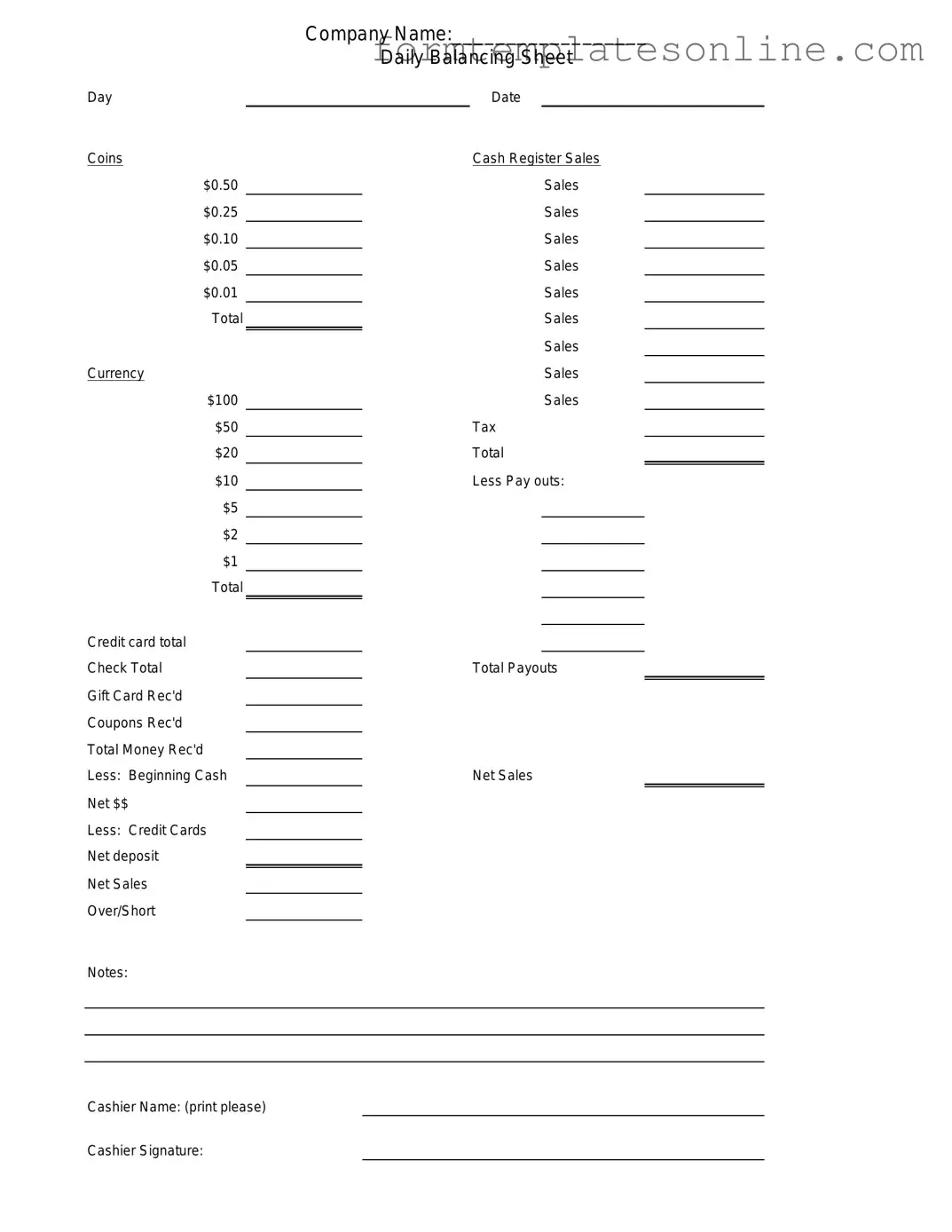What is a Cash Drawer Count Sheet?
A Cash Drawer Count Sheet is a document used by businesses to track the amount of cash in their cash drawers at the end of a shift or business day. It helps ensure that the cash on hand matches the sales recorded during that time. This form is essential for maintaining accurate financial records and can assist in identifying discrepancies if they arise.
Why is it important to use a Cash Drawer Count Sheet?
Using a Cash Drawer Count Sheet is crucial for several reasons. First, it promotes accountability among cash handlers. By documenting cash counts, businesses can reduce the risk of theft or errors. Second, it helps in reconciling cash sales with the cash on hand, ensuring that all transactions are accounted for. This practice also aids in preparing for audits and maintaining compliance with financial regulations.
How do I fill out a Cash Drawer Count Sheet?
Filling out a Cash Drawer Count Sheet involves several steps. Begin by entering the date and the name of the person completing the count. Next, count the cash in the drawer, including bills and coins, and record each denomination in the appropriate section of the form. Finally, total the amounts to provide a final cash count. It’s important to double-check your figures to ensure accuracy.
What should I do if there is a discrepancy in the cash count?
If you find a discrepancy between the cash count and the recorded sales, it’s important to investigate promptly. Review the sales transactions to ensure all sales were entered correctly. Check for any voids or refunds that may not have been accounted for. If the discrepancy remains unresolved, report it to a supervisor or manager for further review. Documenting the issue is essential for future reference.
Can I use a Cash Drawer Count Sheet for multiple cash drawers?
Yes, a Cash Drawer Count Sheet can be used for multiple cash drawers. If your business operates with several registers or cash drawers, it may be helpful to have a separate count sheet for each one. This way, you can maintain clear records for each location. Just ensure that each sheet is filled out accurately and stored properly for future reference.

